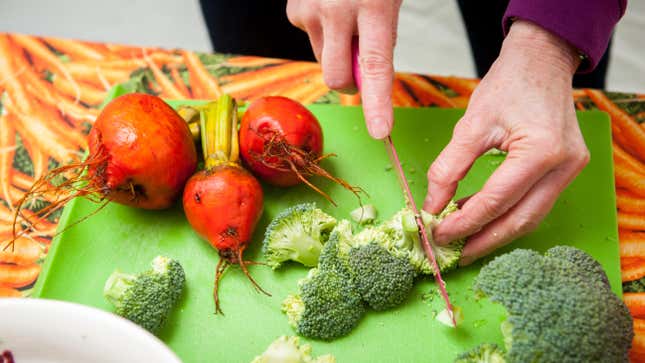
Zoe Schor knows a thing or two about stressful kitchen environments. Not only is she a Michelin-star chef, but also the owner and executive chef at Split-Rail in Chicago and, most recently, a Chopped champion. You don’t achieve even one of those accolades without experiencing your fair share of nicks, burns, and bruises along the way. And once you reach Schor’s status, you know how to avoid kitchen injuries at all costs; you’re less likely to win three rounds of Chopped or keep a booming restaurant running if you slice off a finger while creating a dish.
For Schor, the key isn’t just treating a wound when there’s a cooking mishap—it’s all about prevention.
“It’s not that different from safety when you’re driving a car,” she says. “If you’re piloting a several-ton vehicle, you should be paying attention. If you don’t, you’re going to get into trouble. If you have a knife in your hand or are dealing with hot oil or something else, if you forget the power of that thing, you might live to regret that.”
While it never hurts to have some bandages and burn ointment on hand just in case, these tips will hopefully render anything in your first aid kit obsolete. “I can’t stress enough,” Schor says, “just not getting hurt is the number-one move.”





